2020 Hyundai Verna Test Drive Review
We do an in-depth review of the 2020 Hyundai Verna facelift.
We do an in-depth review of the 2020 Hyundai Verna facelift.
Home » Car News » Hyundai Verna » 2020 Hyundai Verna Test Drive Review
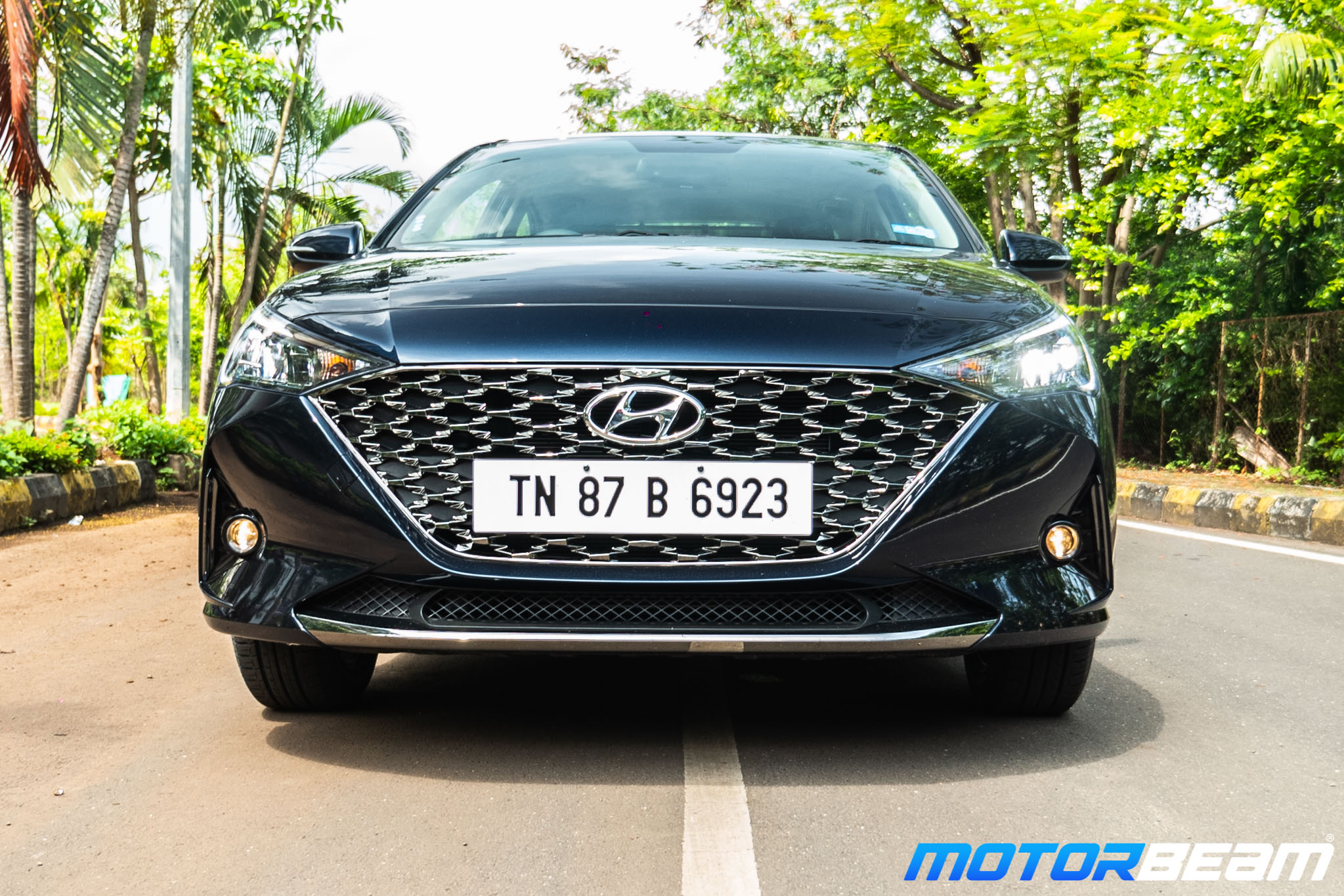
Car Tested: 2020 Hyundai Verna SX(O) 1.5 VTVT; Road Test No. 1192; Test Location: Mumbai
Price OTR Mumbai: Rs. 10.90 – 18.18 lakhs
The Hyundai Verna gets some important updates including three new engine options, new gearboxes and a whole lot of features!
The C-segment is heating up with multiple models getting updates, including the arrival of the new, 5th generation Honda City, the long time segment best-seller. To tackle the Japanese sedan, Hyundai has brought in the Verna facelift which also gets all-new powertrains, mirroring the new Creta to a great extent. Thus the updated Verna isn’t a mere cosmetic job but also boasts of mechanical changes.
MotorQuest: The Hyundai Verna has always given tough competition to other sedans in the C-segment. Hyundai first introduced the Verna in India in 2006 and back then it did come across as a fresh change and a worthy rival to the old Honda City. The second generation of the car was launched in 2012 and this one sold in really high numbers and went on to become a success. The current generation was launched in 2017.
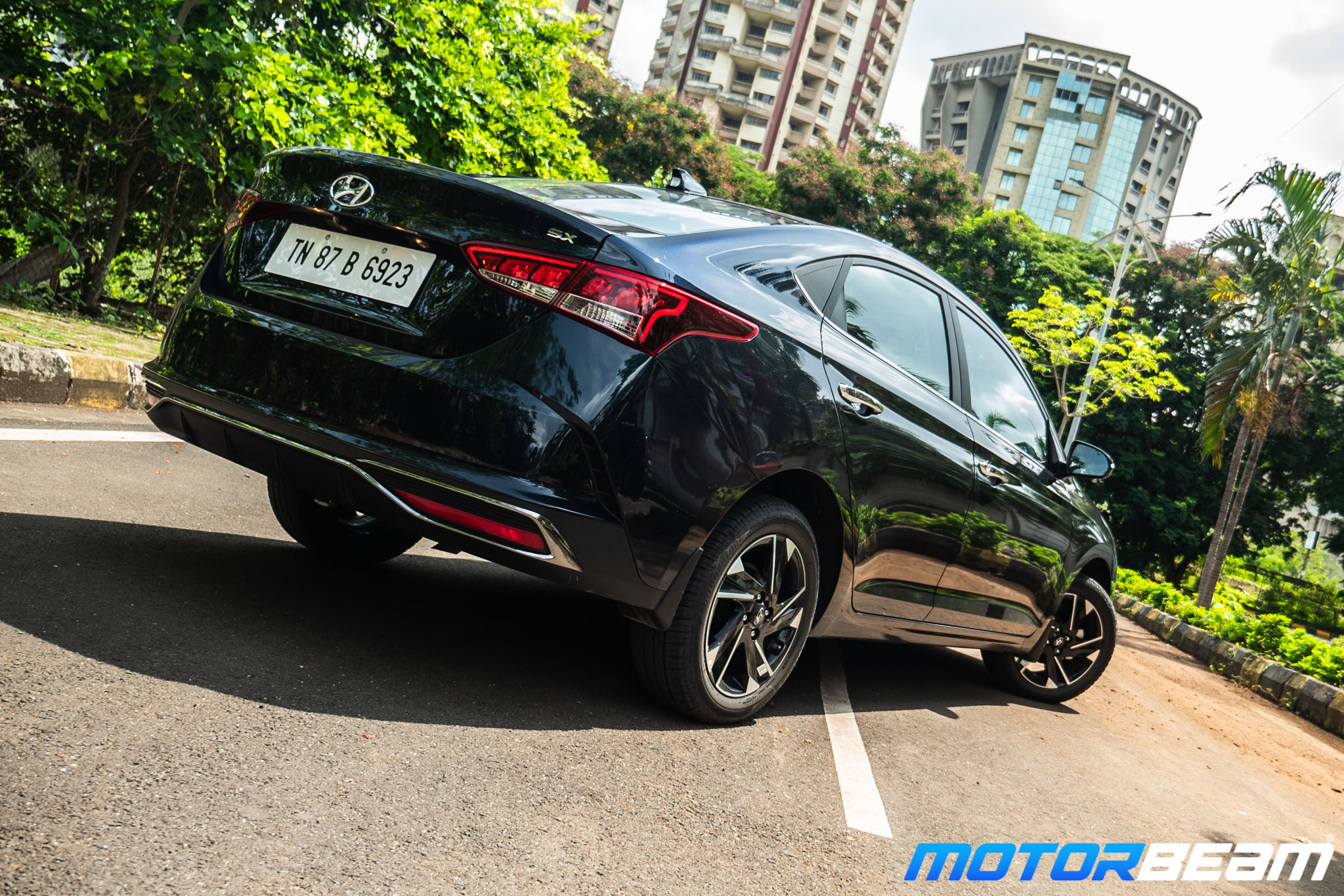
Exteriors – The updated Hyundai Verna looks striking and the updates to the exterior are immediately noticeable and appreciated as well. While the silhouette remains the same as before, the front and rear get a significant update while the sides reveal the new 16-inch dual-tone diamond-cut alloy wheels (lower trims make do with 15-inchers). The biggest change though is to the front where the new Hyundai Verna does come across as very premium indeed.
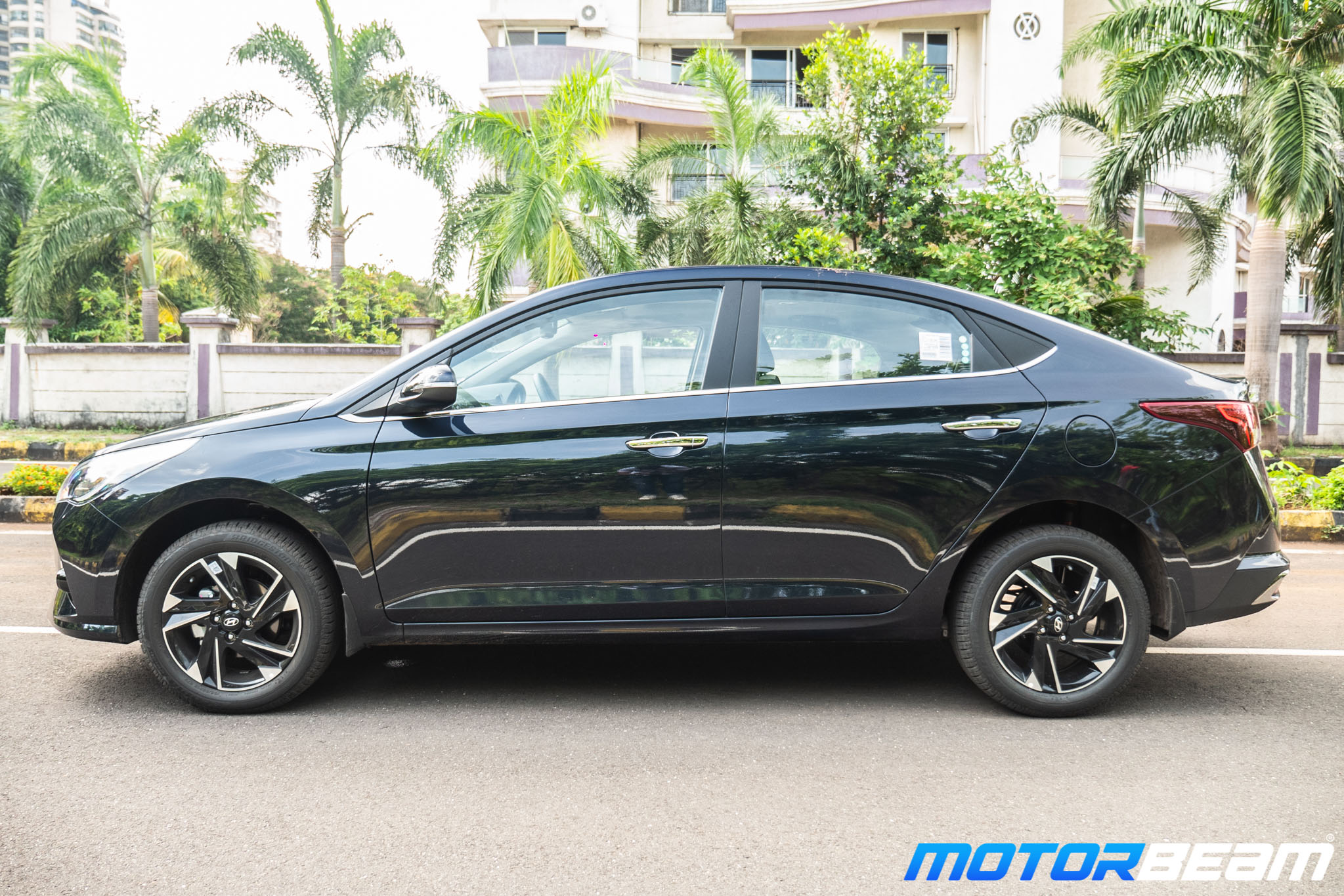
Large dark chrome-finished grille paired with the 16-inch diamond-cut alloy wheels gives the Verna a stealthy and menacing stance
The already large radiator grille has become bigger still, merging with the lights while the dark chrome finish is very tasteful and looks amazing in person. The bumpers and lights have been revised as well, both at the front and the rear but the lights aren’t all LEDs as the indicators and fog lamps continue to be halogens. The Turbo variant gets a gloss black finish on the grille, ORVMs and shark fin antenna, it also gets dual exhaust tips for that sporty appeal. Overall, the new Verna does end up looking fresh and conceals the age of this generation model.
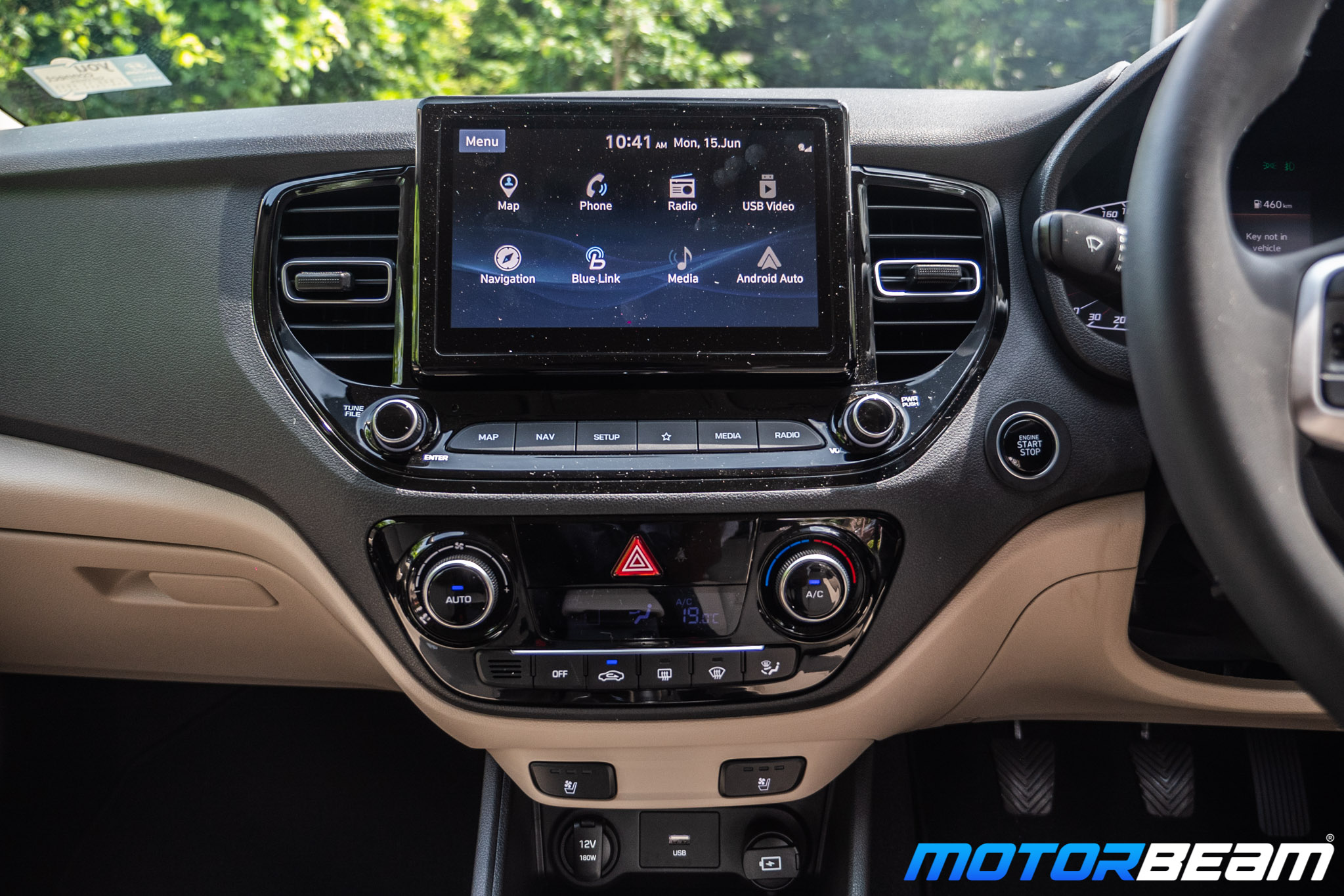
Interiors – The interior doesn’t get many changes other than the addition of features but the thing that stands out is the new all-digital instrument cluster that gets a 4.2-inch multi-information display in the centre. The dashboard design is similar but minor changes have been done to the design of the AC vents, more so in the centre console as the touchscreen size has increased from 7-inch to 8-inch, offering all the connectivity options you would expect including Apple CarPlay and Android Auto. The infotainment system is responsive and fluid to use, it also gets a reverse parking camera with display for the rear parking sensors (the Turbo also gets front parking sensors), Hyundai-Kia unique driver rearview monitor and an Arkamys audio system with 4-speaker and 2-tweeters (this is standard across the range) that offers good audio quality.
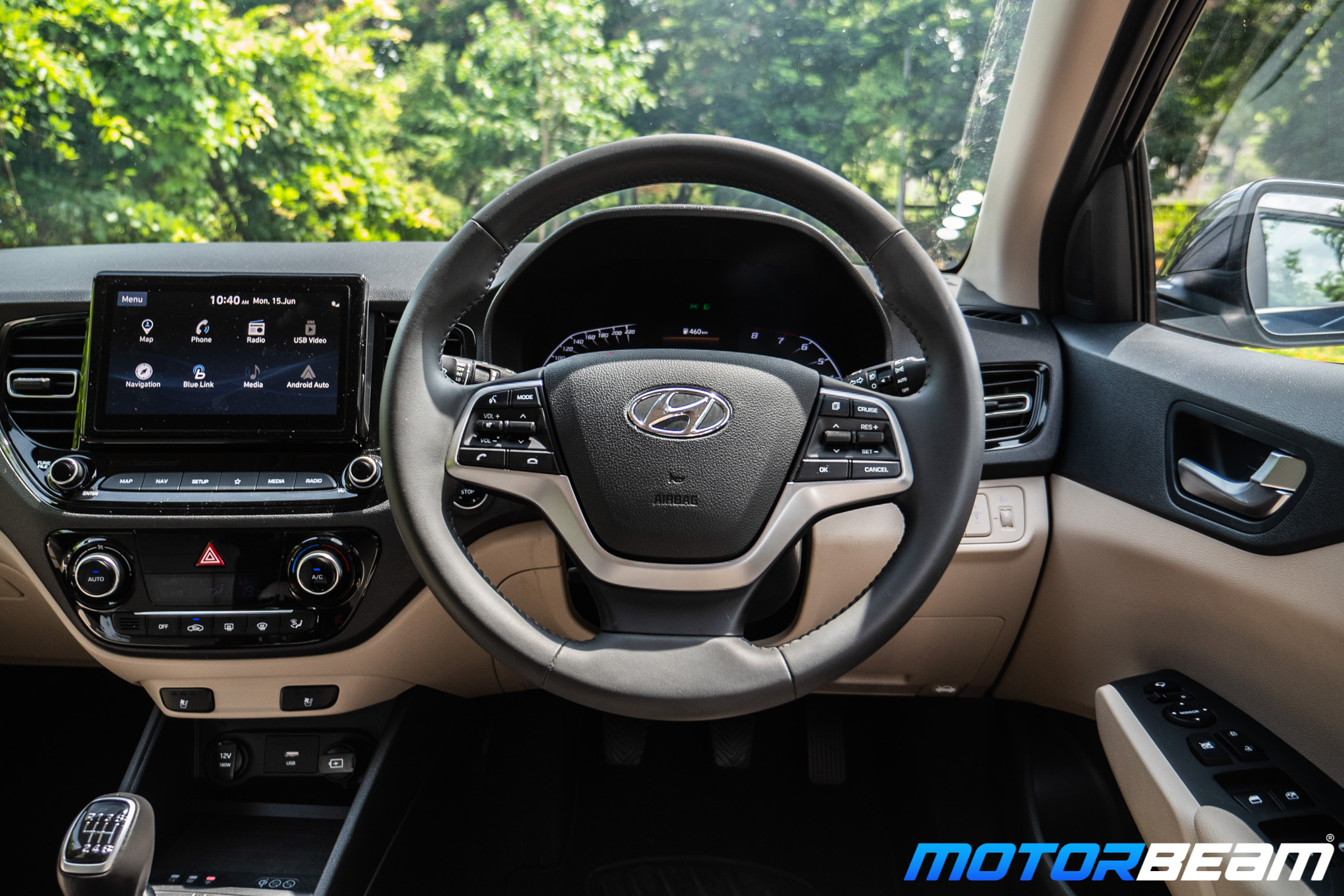
Being a Hyundai, the Verna is loaded with equipment to the brim including connected car features and voice commands
The Hyundai Verna continues with the dual-tone black and beige interiors (the Turbo gets all-black interiors with red inserts on the AC vents). Another segment-first feature is the connected car tech known as BlueLink which offers 45 features and gets a Vodafone Idea eSim with 3-years of complimentary service. The car also gets ventilated front seats, wireless charger, tyre pressure monitoring system, voice commands, sliding front arm-rest, rear USB charger, traction control, hill start assist (in AT), 6 airbags, ISOFIX child seat mounts, art leather upholstery, cornering lamps and a smart trunk which automatically opens the boot if you stand behind the car with the key for 5 seconds.
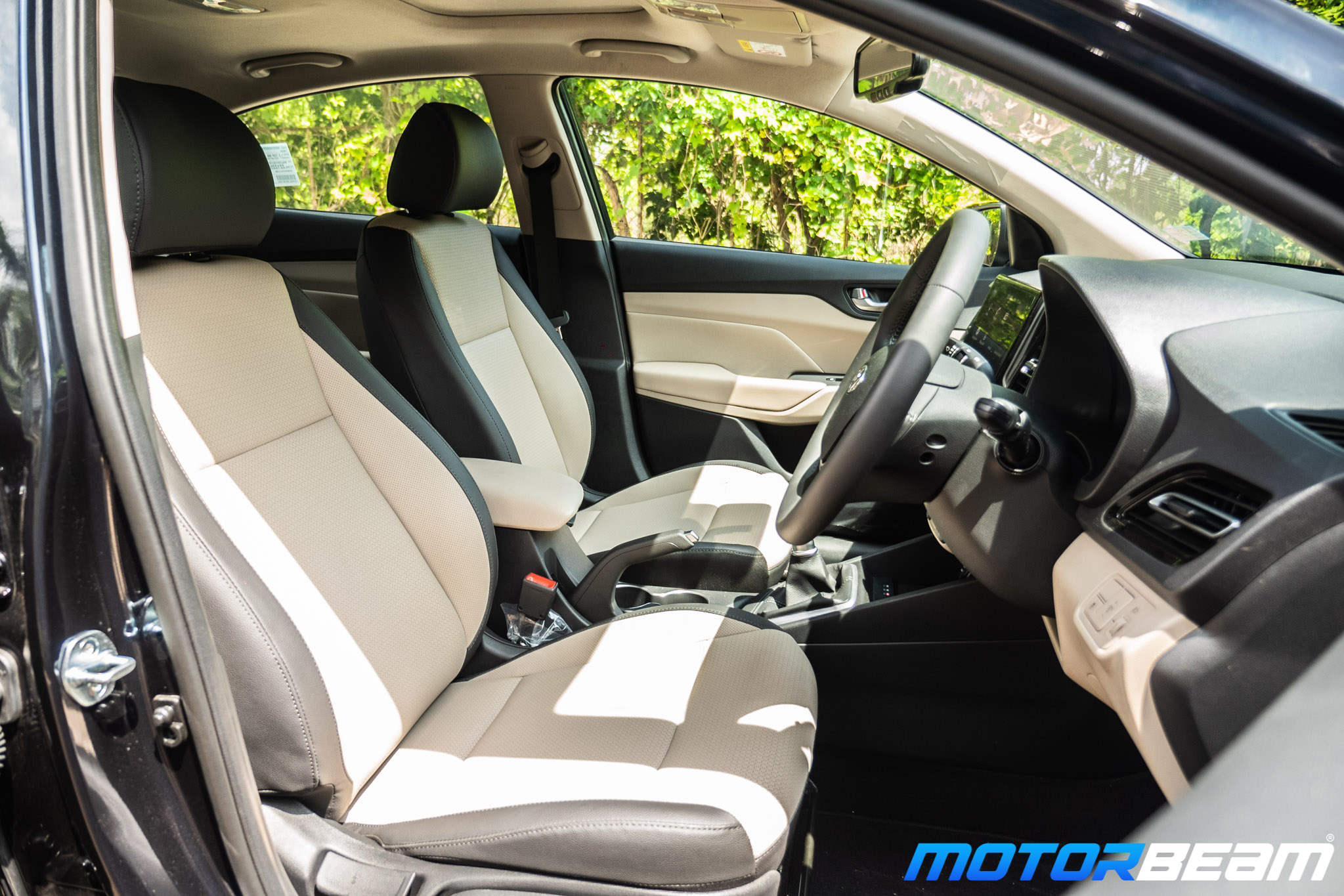
The Verna also gets reach and rake steering adjustment (the new Creta just gets height adjust) and a mirror on the driver side sun visor (missing in the Creta). That said, the achilles heels of the Verna continues to be there which happens to be the rear seat that not only can’t compete with its direct rivals in the segment, but also falls short in front of cars a segment lower like the Honda Amaze. The rear seat is low, yet headroom isn’t adequate for tall passengers, under-thigh support is average at best and so is the space on offer, the cabin isn’t wide enough to seat three either and there is no centre headrest either, although there is a centre arm-rest with twin cupholders and rear AC vents, there is also a manual sunblind for the rear windscreen.
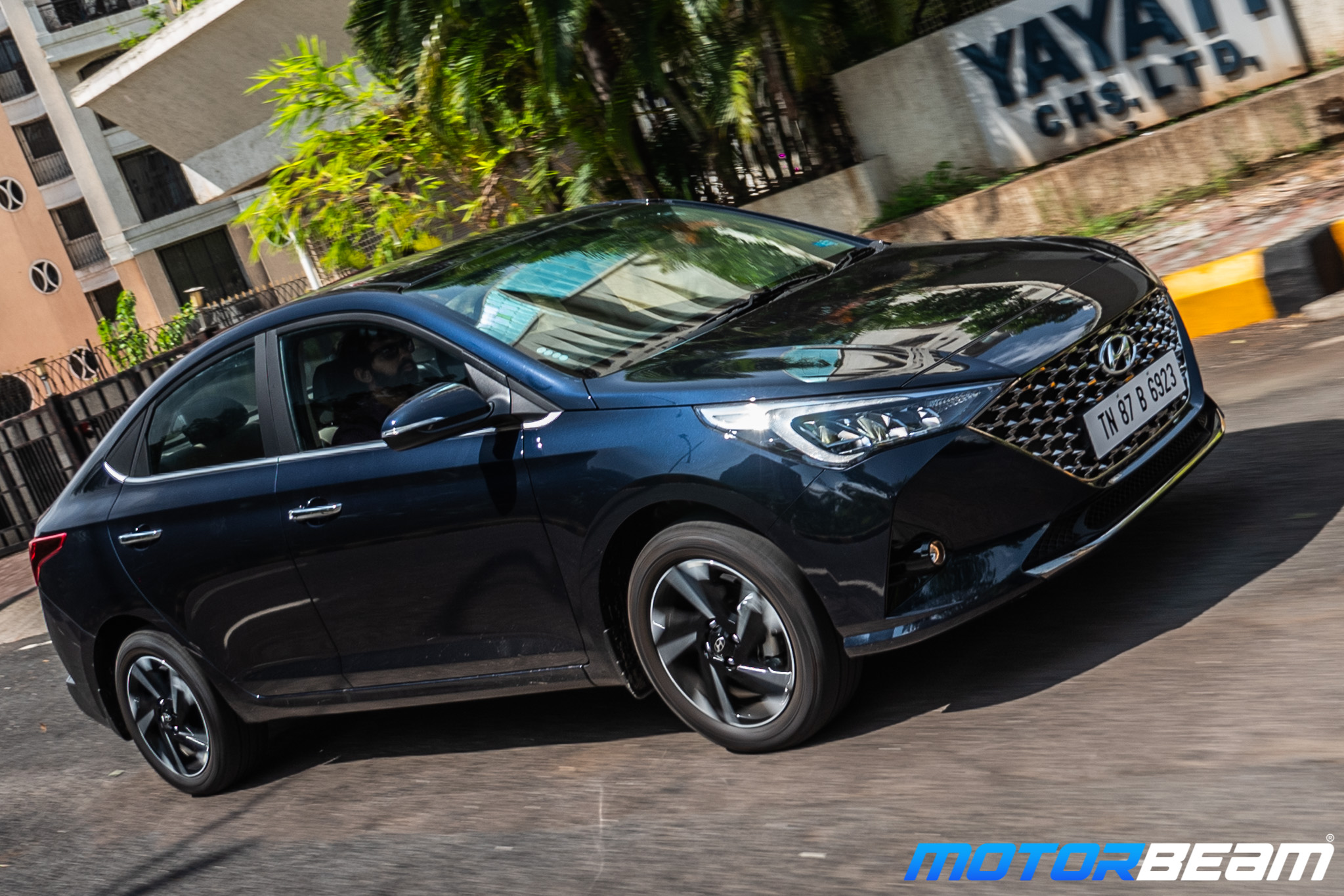
Performance – The Hyundai Verna gets 3 all-new engines – the 1.5-litre petrol and diesel units are paired to either a 6-speed manual or an automatic (CVT for the petrol and torque converter for the diesel), shared with the new Creta, both engines producing an identical 115 PS, having a decrease in output compared to the old 1.6 units. The 1.5-litre diesel is much spoken about as it also powers the Kia Seltos and the model we tested was the NA petrol, that outputs 144 Nm of torque (overall reduction is 8 PS and 7 Nm).
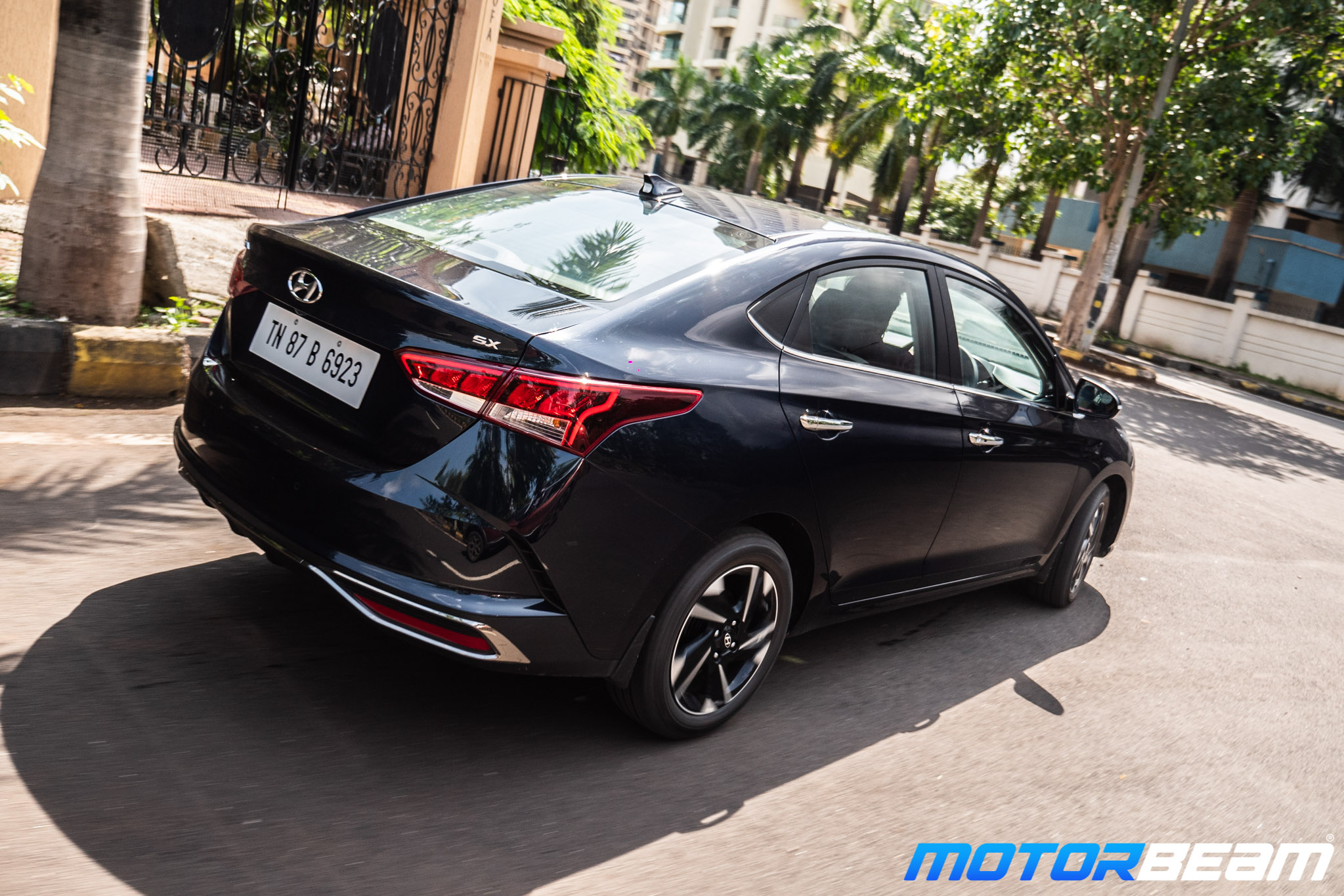
Hyundai is offering the Turbo petrol variant with a DCT gearbox, making the Verna the only car in its segment to get a DCT now
The Hyundai Verna petrol offers smooth performance, is thoroughly refined but quite vocal once you get past 4000 RPM, redlining at 6500 RPM. The engine is eager at the get-go, making it quite drivable and you don’t have to punch the throttle all the way to make progress since the part-throttle response is good too. So low and mid-range is quite good but top-end is lacking as it tends to feel breathless once you near the redline. Fuel economy has improved due to the downsizing but the CVT has seen the biggest improvement. One can expect between 9-13 km/l from the Verna 1.5 petrol MT while the Turbo is a 1.0-litre engine and is the most powerful petrol model of the Verna, it is also the most efficient and gets steering mounted paddles as it gets the state of the art 7-speed DCT gearbox.
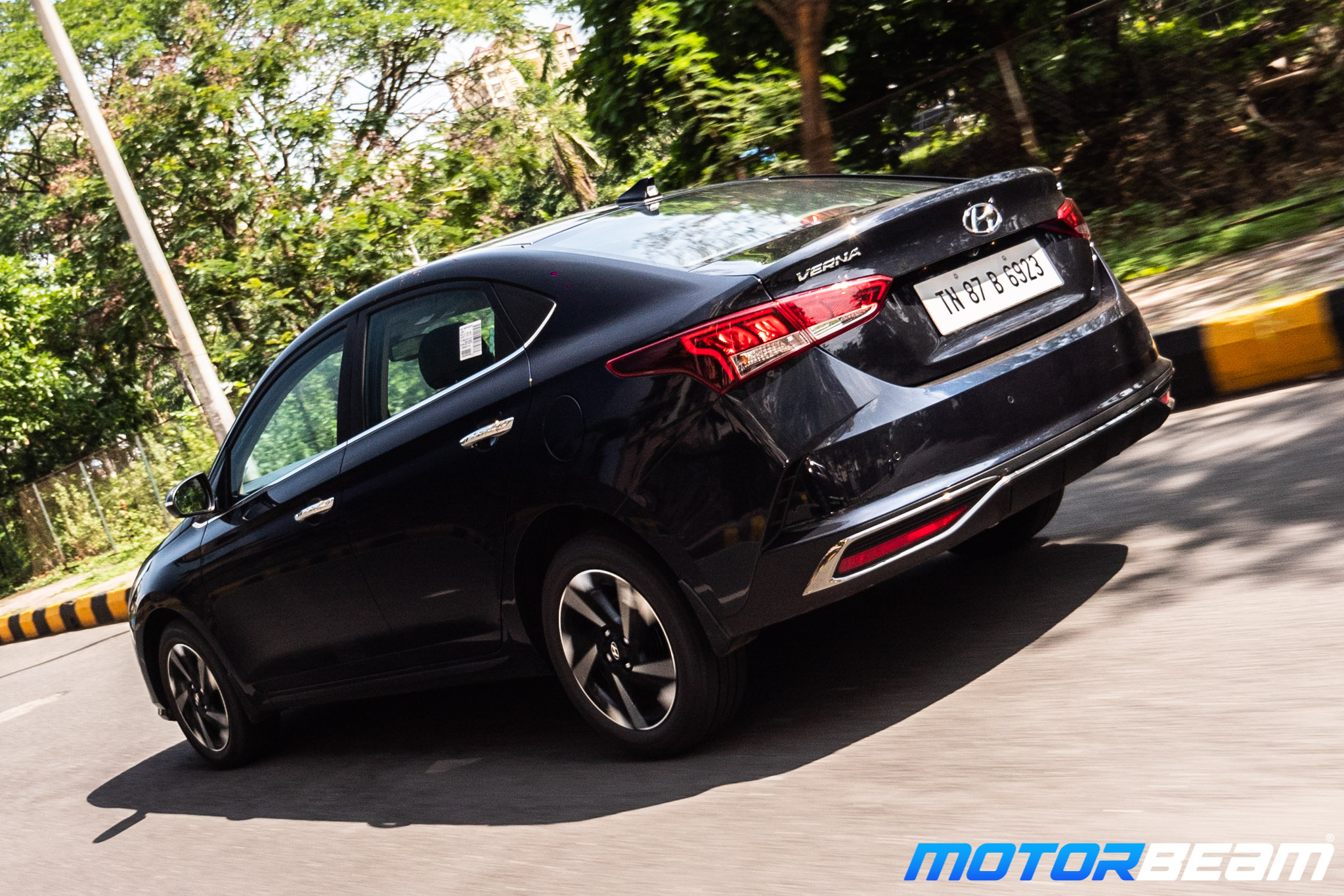
Driving Dynamics – This generation of the Hyundai Verna has newfound confidence in the way it drives, it insulates outside noise so well that at times you feel you are going slower than you actually are! NVH levels are good, the chassis is rigid enough for the Verna to not feel uneasy at high speeds while the suspension does a great job, only being affected by big bumps. Body roll is there but it’s the inconsistent feel from the steering and the lack of weight that dulls the driving experience, this isn’t a car that loves corners although there is a good amount of grip when you hit the twisties. The Verna boasts of strong brakes but the ABS unit is a bit sensitive. The Turbo also gets rear discs and an emergency stop signal has been added which flashes on the tail light.
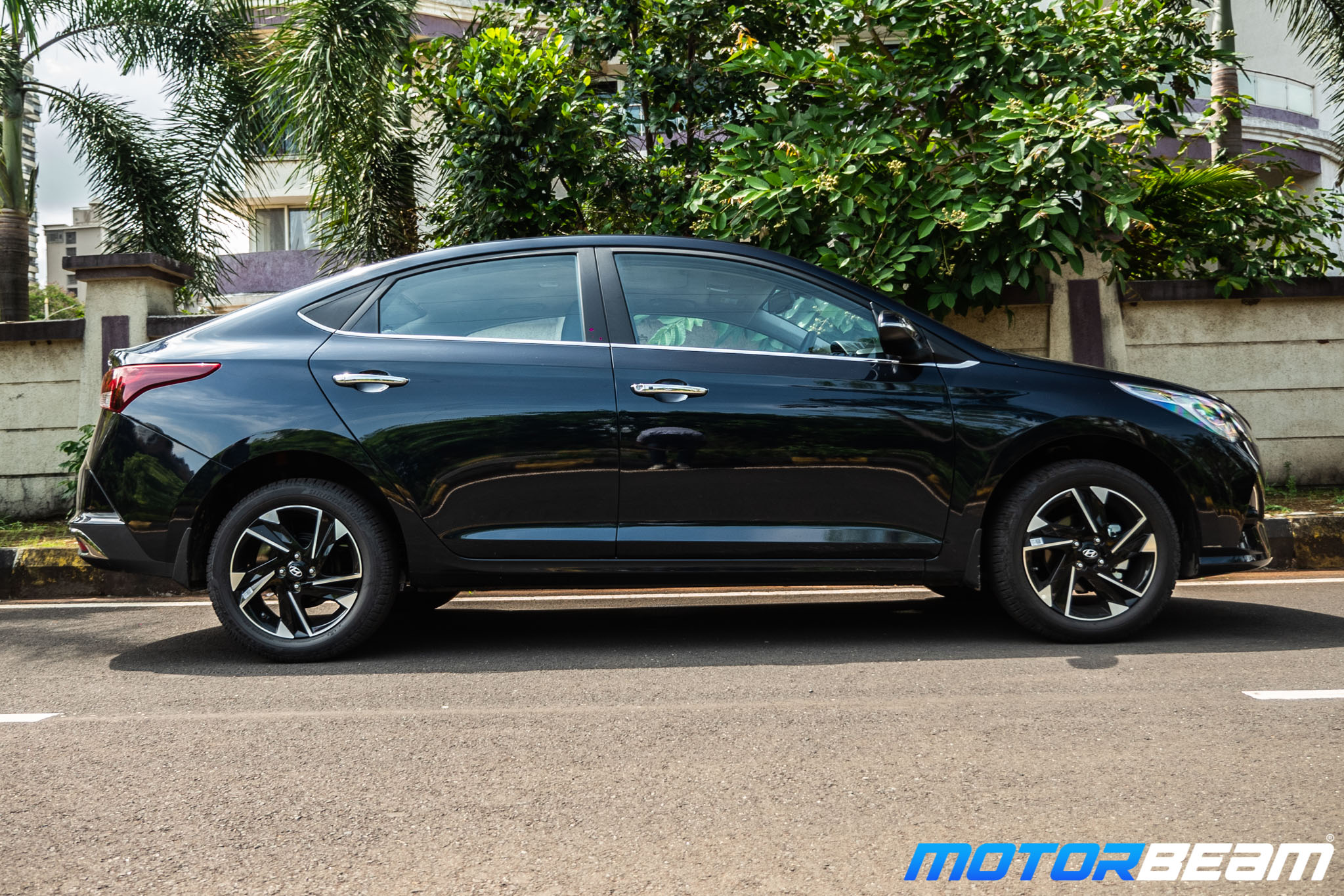
Verdict – Hyundai continues to build on the strength of the Verna which focuses on comfort, ease of driving, features and visual appeal. The car is available with Hyundai’s Wonder Warranty (3-years/unlimited kms, 4-years/60,000 kms or 5-years/50,000 kms). With 5 powertrain options and a total of 11 variants, the Verna covers a large base in the C-segment and thus comes across as a solid proposition to those seeking a self-drive sedan with the premium appeal.
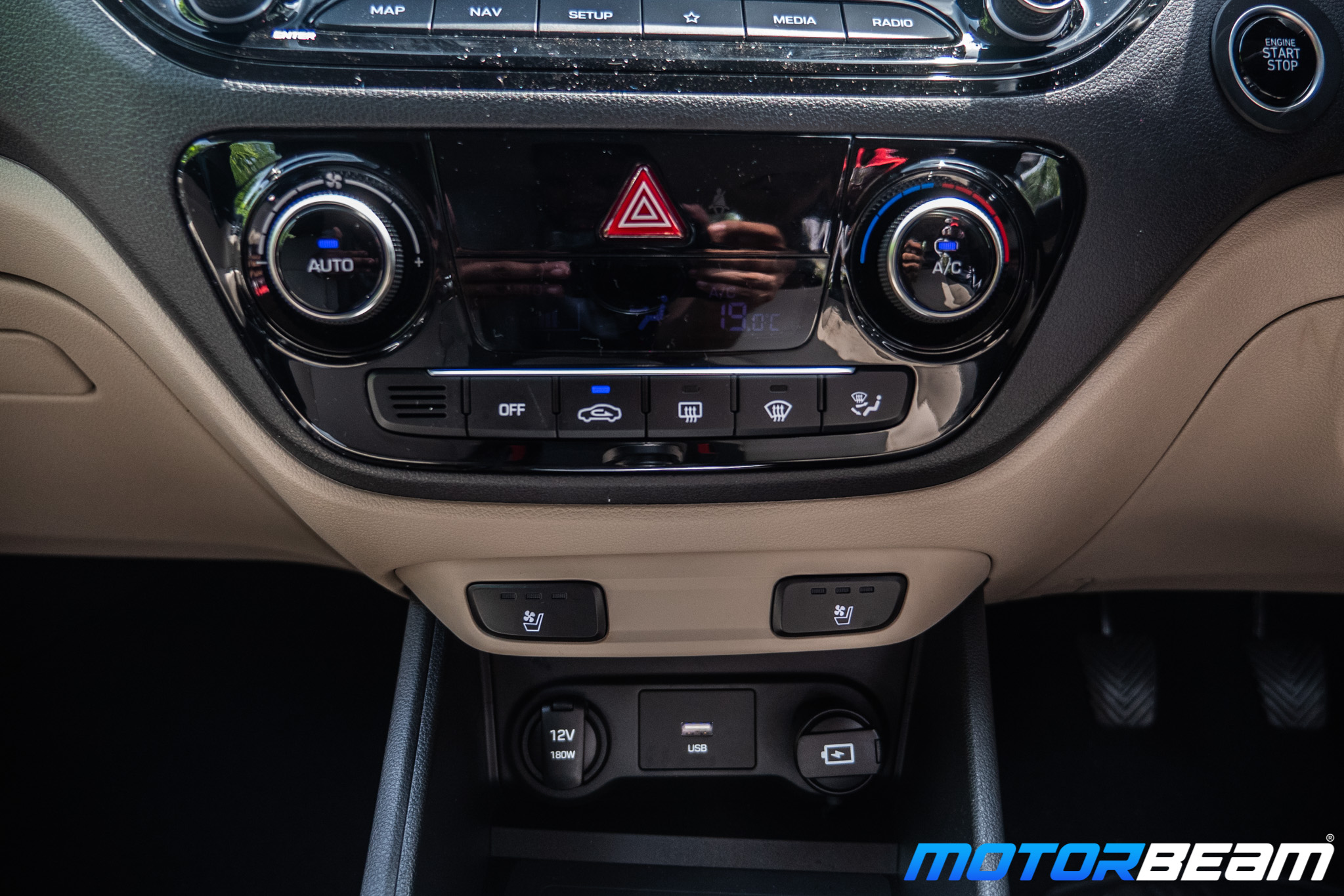
What’s Cool
What’s Not So Cool
Alternatives:- Honda City, Maruti Ciaz, Toyota Yaris, Volkswagen Vento, Skoda Rapid
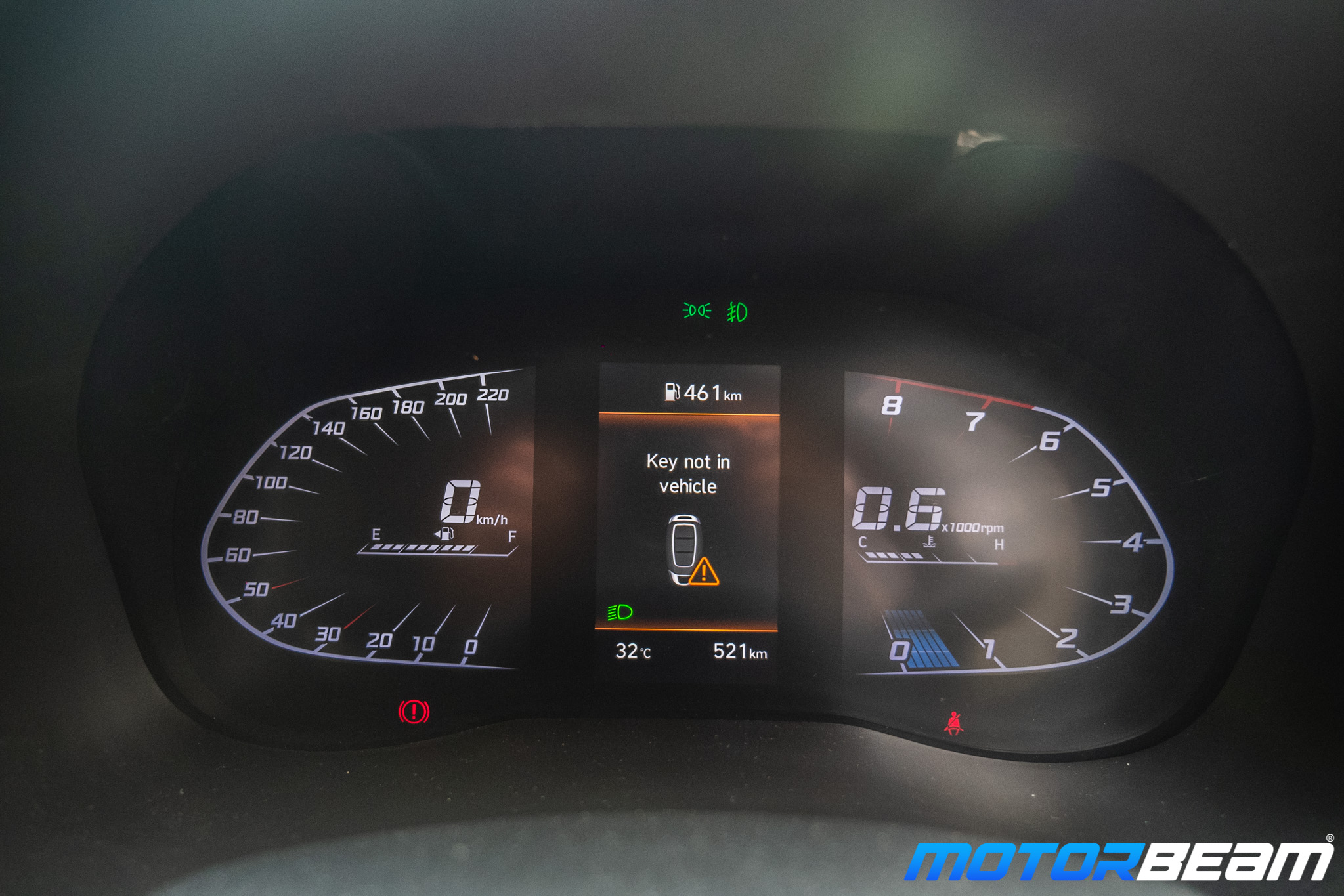
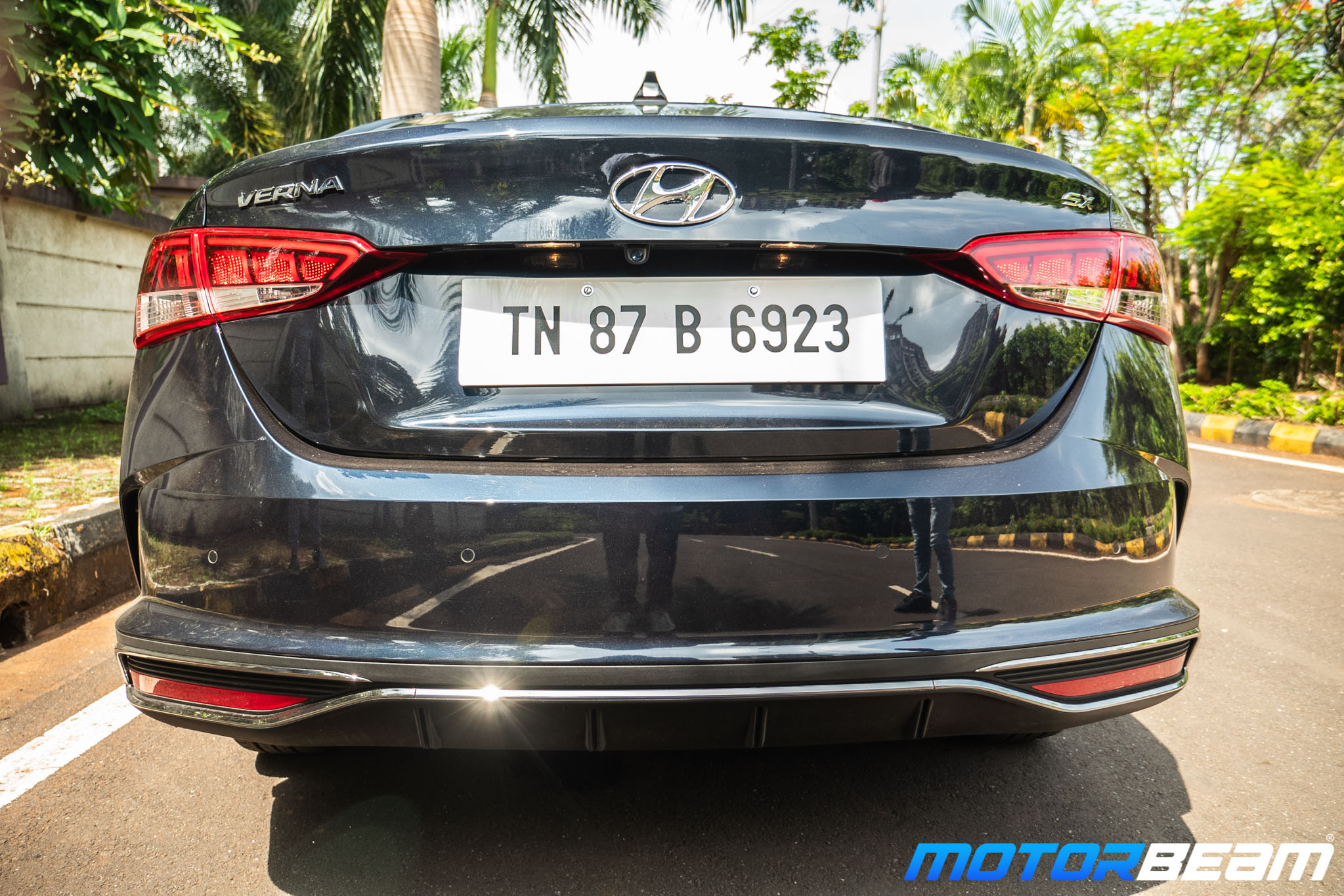
Further Reading –
Hyundai Verna Diesel Long Term Review – Second Report
Hyundai Verna Diesel Long Term Review – First Report
Honda City vs Hyundai Verna vs Toyota Yaris – Shootout
Honda City vs Hyundai Verna vs Toyota Yaris – Video
